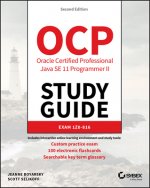
Code: 08142910
Quantitative Validation of a Model of Chlorinated Ethene Natural Attenuation
by Harold C Young
Chlorinated ethenes are among the most prevalent groundwater contaminants at hazardous waste sites nationwide. In an attempt to manage the risks posed by these contaminants, while controlling costs, monitored natural attenuation ( ... more
- Language:
 English
English - Binding: Paperback
- Number of pages: 100
Publisher: Biblioscholar, 2012
- More about this

56.85 €
RRP: 57.98 €
You save 1.13 €

In stock at our supplier
Shipping in 15 - 20 days
You might also like
-

Morals of Confucius, a Chinese Philosopher, ... Being One of the Choicest Pieces of Learning Remaining of That Nation.
20.72 € -19 % -

Lies, Lies, and More Lies!
17.70 € -1 % -

Road to Destruction Has an Exit
26.66 € -

Clip Joint
27.87 € -

Aiducation 20-10 Taking Control of Tb & AIDS
19.51 € -6 % -

Bear Dancer
9.15 € -18 % -

Finding
22.23 € -6 % -

From the Day You Say Yes
30.38 € -7 % -

5 Steps to Board Success
36.12 € -

Basic Equipment
24.55 € -

Case Against the Davis-Bacon Act
68.93 € -

Compliments
12.87 € -2 % -

Pleiadian Spirals of Light: Workbook
16.19 € -2 % -

SCRABBLE WITH SLIVOVITZ - Once upon a time in Yugoslavia
16.80 € -2 % -

Poeticall Essayes of Sam. Danyel. Newly Corrected and Augmented. [Containing the First Fowre Bookes of the Civile Wars, the Fyft Booke of the CIVILL W
15.99 € -19 % -

Book of Bombay, Volume 2
38.43 € -

Grainger's Thorn. a Novel.
24.65 € -19 % -

Shakspeare Gallery, Containing the Principal Female Characters in the Plays of the Great Poet. Engraved ... from Drawings by the First Artists, Under
20.72 € -19 % -

Moore's Irish Melodies, Lalla Rookh, National Airs, Legendary Ballads, Songs, etc., with a memoir by J. F. Waller. Illustrations.
34.61 € -

Bell's Edition of Shakspere. Volume 20 of 20
31.79 € -19 % -

Shrine of Bertha. a Novel. in Two Volumes. by Miss Robinson. ... Second Edition. Volume 2 of 2
29.38 €
Give this book as a present today
- Order book and choose Gift Order.
- We will send you book gift voucher at once. You can give it out to anyone.
- Book will be send to donee, nothing more to care about.
More about Quantitative Validation of a Model of Chlorinated Ethene Natural Attenuation
You get 143 loyalty points
 Book synopsis
Book synopsis
Chlorinated ethenes are among the most prevalent groundwater contaminants at hazardous waste sites nationwide. In an attempt to manage the risks posed by these contaminants, while controlling costs, monitored natural attenuation (MNA) is being considered as a remediation strategy at many sites. MNA relies on naturally occurring physical, chemical, and biological processes in the subsurface to reduce the risk posed by the contamination. The implementation of MNA, however, requires a detailed understanding of these processes, and how they impact contamination at a particular site. One way to gain this understanding is through contaminant fate and transport modeling. In this study, a deterministic model that includes relevant fate and transport processes was applied to a chlorinated ethene-contaminated field site, at which spatial and temporal data had been collected. Parameters used for model input were obtained from the literature, experimental data, and by calibrating the model using concentration data from 1993. The model was then run in a predictive mode, and simulation results were compared to field data from 1999. Model performance was measured by comparison of observed and simulated concentration contour plots and evaluation of goodness-of-fit statistics. Over the six years the model was run in a predictive mode, the model was found to predict contaminant concentrations reasonably well for the three contaminants that were monitored.
 Book details
Book details
Book category Books in English Society & social sciences Education
56.85 €
- Full title: Quantitative Validation of a Model of Chlorinated Ethene Natural Attenuation
- Author: Harold C Young
- Language:
 English
English - Binding: Paperback
- Number of pages: 100
- EAN: 9781249602880
- ISBN: 9781249602880
- ID: 08142910
- Publisher: Biblioscholar
- Weight: 195 g
- Dimensions: 246 × 189 × 5 mm
- Date of publishing: 10. October 2012
Trending among others
-

Cambridge IGCSE (R) & O Level Complete Chemistry: Student Book Fourth Edition
42.46 € -

Cambridge IGCSE (R) & O Level Complete Physics: Student Book Fourth Edition
41.96 € -

Jim Trelease's Read-aloud Handbook
16.80 € -27 % -

Cambridge IGCSE (R) & O Level Complete Biology: Student Book Fourth Edition
39.24 € -

Powerful Teaching: Unleash the Science of Learning
26.26 € -26 % -

Oxford IB Diploma Programme: IB Economics Course Book
62.28 € -

OET Preparation
9.65 € -

Business Partner B1+ Workbook
16.90 € -3 % -

Oxford IB Diploma Programme: IB Theory of Knowledge Course Book
62.79 € -

Speed and Accuracy: Multiplication
8.64 € -

Pearson Edexcel International GCSE (9-1) English Language B Student Book
50.41 € -

KS3 Maths 10-Minute Weekly Workouts - Year 7
8.04 € -8 % -

KS3 Maths 10-Minute Weekly Workouts - Year 8
8.04 € -8 % -

The End of Education
13.48 € -25 % -

Deep Healing and Transformation
48.40 € -

Dancing Heads
12.17 € -24 % -

Freiarbeitsmaterial für die Grundschule - Deutsch - Klasse 1/2
22.83 € -4 % -

AQA GCSE German Higher Practice Papers
15.39 € -

Business Partner B1 Workbook
17.50 € -8 % -

Business Partner B2 Workbook
16.90 € -3 % -

Blue Book of Grammar and Punctuation: An Easy- to-Use Guide with Clear Rules, Real-World Examples , and Reproducible Quizzes, Twelfth Edition
15.19 € -28 % -

Grade 9-1 GCSE Maths AQA Revision Question Cards - Higher
10.05 € -4 % -

Positive Discipline Tools for Teachers
17.40 € -18 % -

Speed and Accuracy: Division
8.64 € -

Pearson Edexcel AS and A level Mathematics Statistics & Mechanics Year 1/AS Textbook + e-book
17.80 € -

(ISC) SSCP SG & SSCP Practice Test Kit, 3e
84.02 € -5 % -

Motivation and Reinforcement
46.18 € -

Read Write Inc. Phonics: Red Ditty Book Bag Books (Mixed Pack of 10)
74.36 € -

Imagine If...
11.26 € -28 % -

OET Reading Subtest Preparation
12.57 € -7 % -

Vol 2 Blackletter Lettering Adventures
25.25 € -2 % -

AS & A Level Maths For Dummies
17.30 € -27 % -

Forensic Linguistics Articles
14.48 € -1 % -

CompTIA Security+ Review Guide - Exam SY0-601
24.85 € -24 % -

Practical Guide on Veterinary First Aid using Homeopathy
14.78 € -2 % -

Abolition of Man
18.61 € -1 % -

Human Landscapes from My Country
28.67 € -21 % -

Corrected Squares of The Book of Abramelin
503.88 € -

Hanbo Jutsu: Use of Hanbo, Cane and Walking Stick for Self Defense
11.36 € -

Reading Mind - A Cognitive Approach to Understanding How the Mind Reads
21.53 € -28 % -

North Korea's Military Threat
25.45 € -

English Language & Literature WORKBOOK: York Notes for GCSE (9-1)
8.95 € -9 % -

Release Your Inner Drive
15.09 € -18 % -

Effect of Registration Errors on Tracking in a Networked Radar System
56.85 € -1 % -

Princeton Review SAT Premium Prep, 2021
42.66 € -4 % -

CEH v11 Certified Ethical Hacker Study Guide + Practice Tests Set
74.76 € -5 % -

10 Practice Tests for the SAT, 2021 Edition
31.59 € -

OCP Oracle Certified Professional Java SE 11 Programmer II Study Guide - Exam 1Z0-816 and Exam 1Z0-817
49.91 € -4 % -

Scrum - A Pocket Guide - 2nd edition
34.21 €
Collection points Bratislava a 2642 dalších
Copyright ©2008-24 najlacnejsie-knihy.sk All rights reservedPrivacyCookies


 15549 collection points
15549 collection points Delivery 2.99 €
Delivery 2.99 € 02/210 210 99 (8-15.30h)
02/210 210 99 (8-15.30h)